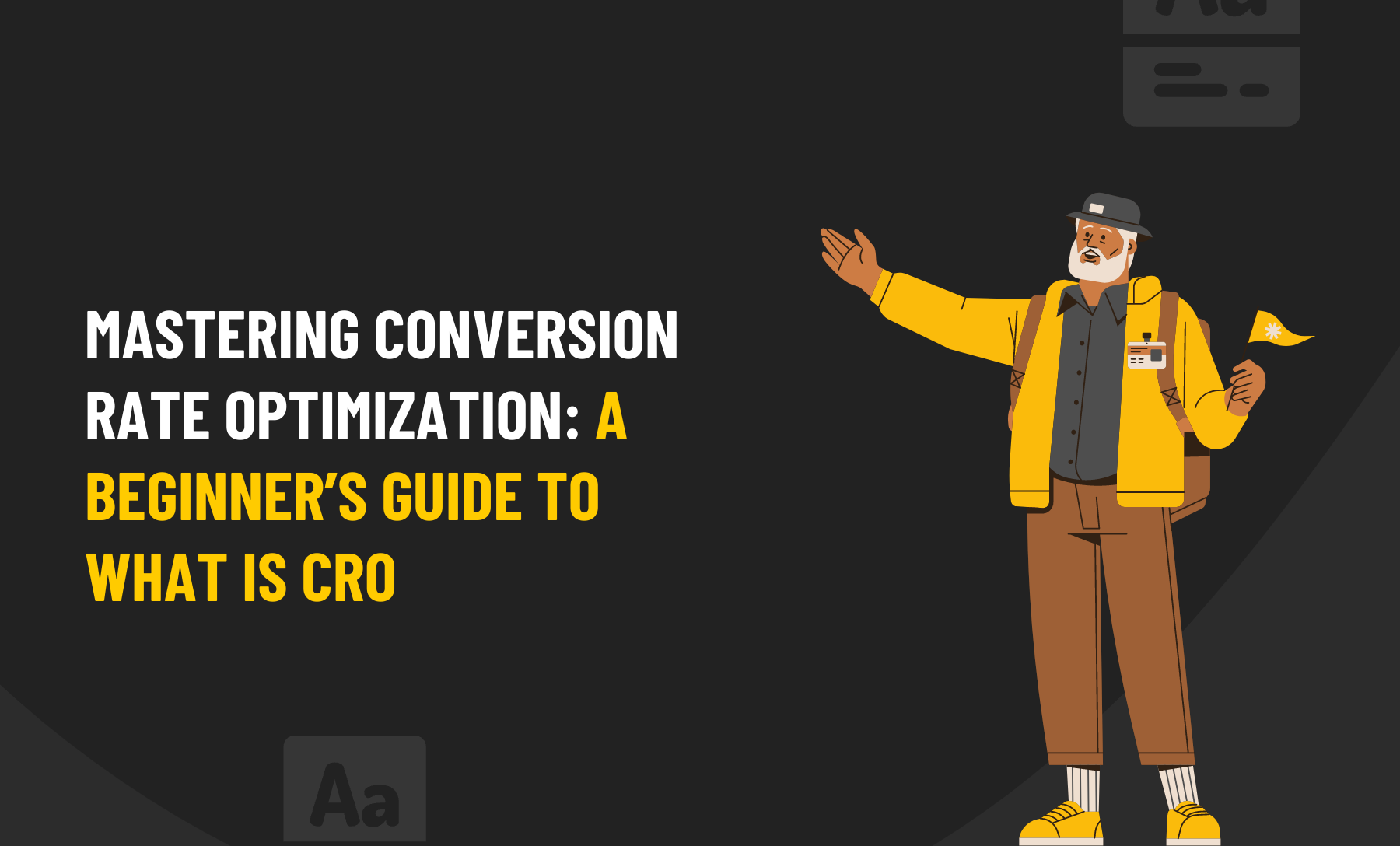Are you looking to increase the rate of visitors to your website taking action?
Conversion Rate Optimization (CRO) is the key. It is a process that helps businesses understand how users interact with their websites and optimise them for higher conversions.
If you want to learn more about CRO, you’ve come to the right place. In this article, we’ll share eight essentials for getting started with conversion rate optimisation, the purpose of CRO, what a CRO strategy looks like, and what tools are available to help you get started.
So if you’re ready to maximise your website’s potential and start seeing results from your efforts, let’s dive in.
Getting Started With Conversion Rate Optimization (CRO)
Conversion Rate Optimization (CRO) is the process of understanding user behaviour on your website and optimising it for higher conversions. To get started, here are 8 of the hottest CRO strategies that you can start using immediately;
1. Start With A Goal:
Decide what you want to achieve from CRO, such as increasing conversion rates or reducing bounce rates.
2. Identify Low-Hanging Fruit:
Analyse user data to identify areas of improvement that will yield quick wins.
3. Use A/B Testing:
Experiment with different versions of a page to determine which performs better.
4. Personalised Content:
Tailor content to fit customer segments for an individualised experience.
5. Utilize Heatmaps And Recordings:
Monitor customer journeys on your website and make improvements based on their interactions.
6. Implement Surveys:

Ask customers about their experience and use the feedback to inform your optimisation efforts.
7. Optimize For Mobile Devices:
Ensure all pages are optimised for mobile users to provide an optimal experience regardless of device type or size.
8. Track Results Continually:
Use dashboards to monitor performance metrics over time and make adjustments as necessary.
How Conversion Rate Optimization (CRO) Works
Getting started with Conversion Rate Optimization (CRO) can seem daunting, but it doesn’t have to be. First, start by understanding the basics of CRO and how it works.
Identify which areas of your website you want to focus on for optimisation, and then prioritise those areas using the PIE framework. This framework helps determine which strategies for improvement offer the greatest potential, importance, and ease.
Once you know what needs improving, you can use A/B testing to compare different versions of a page or feature to determine which one has the highest conversion rate.
Finally, once you’ve identified your high-priority strategies and tested them with A/B testing, it’s time to implement them into your website.
The Purpose Of Conversion Rate Optimization
The purpose of conversion rate optimisation (CRO) is to improve the likelihood of visitors taking a desired action on a webpage.
It involves applying strategies such as A/B testing, which compares different versions of a page or feature to determine which one has the highest conversion rate, and the PIE framework, which helps determine which strategies for improvement offer the greatest potential, importance, and ease.
By understanding these concepts and identifying areas of your website to focus on for optimisation, you can make changes that will help convert more visitors into customers.
What Is A CRO Strategy?
A CRO strategy is an approach to improving the performance of a website or page in terms of the number of visitors who take a desired action.
This could mean anything from signing up for a newsletter, downloading an app, making a purchase, or clicking on an ad.
A well-designed CRO strategy will identify key metrics and target audiences to focus on and collect user feedback and other data to help decide what needs to be tested.
What Are CRO Tools?
CRO tools are designed to simplify or automate optimising your conversion rate. They help with lead capture, research, analytics, mouse tracking and heat maps, feedback, or running experiments.
A/B testing tools are an important part of any CRO strategy, and they can make it easier to set up and analyse consumer data.
Heatmaps allow you to view where users click on a page and which areas are not being seen as much. This helps identify potential problem areas that need improvement.
Analytical tools provide insights into user behaviour, such as what pages they visit most often and how long they stay on each page.
Finally, feedback tools enable you to get direct customer responses so you can better understand their needs and interests.
With all these benefits combined, CRO tools are a powerful way to maximise your online presence and conversions.
Final Thoughts
CRO is an ongoing process that requires continuous monitoring and optimisation. It’s important to understand the basics of CRO and access various tools that can help you along the way.
Setting goals will make tracking your success easier and determining where improvements need to be made.
Finally, it’s also important to remember that there are no quick fixes when improving your conversion rate. With time and effort, you should achieve the desired results. With the right strategy and CRO tools, you could make great strides in optimising your website for conversions.
FAQs
Can CRO be applied to other business areas beyond the website?
Yes, the principles of CRO can be applied to other business areas, such as email marketing or social media advertising. The goal is to optimise the conversion rate of any marketing or advertising channel to maximise ROI.
What is the best way to learn about conversion rate optimisation?
There are several ways to learn about CRO, including online courses, webinars, blogs, and books.
Many digital marketing and e-commerce platforms offer resources and tools for learning about CRO.
Additionally, attending industry events and networking with professionals in the field can provide valuable insights and knowledge.
How long does it take to become proficient in Conversion Rate Optimization?
The time it takes to become proficient in CRO depends on various factors, such as your current level of knowledge, experience, and the amount of time and effort you dedicate to learning and practising.
While some individuals may learn the basics in a few weeks, becoming an expert in CRO may take several months or even years of practice and experimentation.
The key is to stay updated with the latest trends and best practices and to analyse and optimise your website to improve conversion rates continuously.








